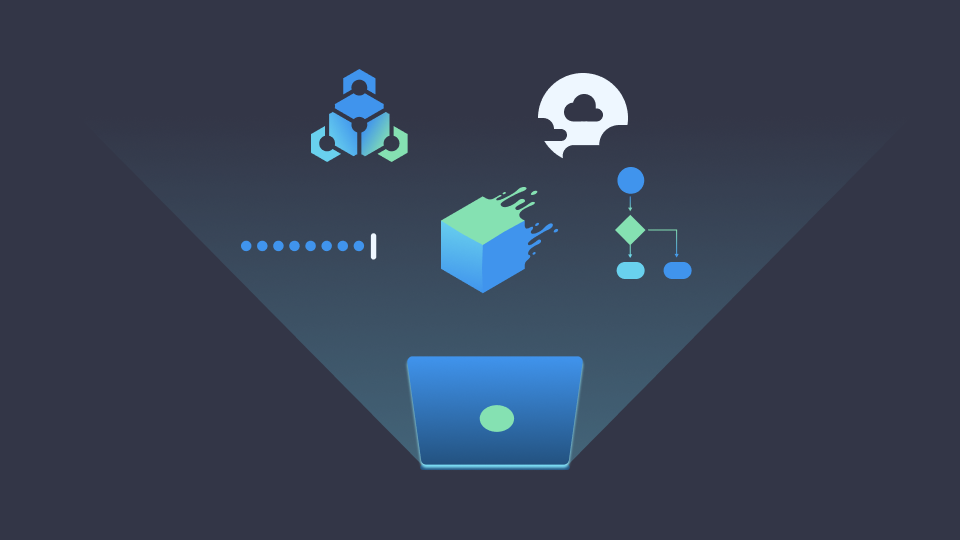
Over the past several years, many tech companies overextended themselves in an effort to keep up with emerging technologies and growing opportunities. Now we’re seeing the results as major companies are laying off large percentages of their workforce.
However, while companies are course correcting their overstaffing mistakes, the demand to innovate hasn’t gone anywhere. In response, software development outsourcing is expected to grow by 70% in 2023.
Outsourcing software development services and managed developer networks have become the way to stir up productivity by offering companies access to development talent in rapidly evolving technologies without increasing their in-house teams.
Software development outsourcing happens when a company chooses to have its custom software solutions developed by a qualified third party. In a world that’s becoming more digitized by the day, there’s overwhelming evidence that software outsourcing is a rapidly growing industry, as both startups and established enterprises are engaging third-party software developers in a trend that is expected to continue growing in the coming years.
According to Statista, global software development outsourcing is estimated to reach $430 billion by 2023. Meanwhile, North America’s outsourcing market could hit the $227.40 billion mark by 2027. At the same time, revenues flowing from software outsourcing are predicted to achieve an annual growth rate (CAGR 2023-2027) of 7.54%. The fantastic growth rate is mainly caused by a widening gap between the supply and demand of existing developer talent, resignations and staff reductions creating the need to outsource qualified talent, and the emerging trend of remote work and the gig economy. This is especially true for startups facing enormous growth potential but being harassed to scale quickly and competently.
Outsourcing tech talent is now essential for business success, either as a ladder to quick up-scaling or a cost-saving measure. The most tangible benefits include:
With a Forbes report showing that at least 82% of enterprises experienced cyber-attacks in 2022, companies that have traditionally depended on in-house teams managing data security face serious challenges. As digitizing processes increases and opens avenues for software development companies, it also increases more channels for hackers to access and compromise application security. Companies will likely be outsourcing their data operations to third-party providers with technical expertise in data security to protect their applications.
Businesses are assembling soft technologies to boost efficiency or streamline operations, causing a constant evolution of cloud computing, automation, the Internet of Things (IoT), artificial intelligence (AI), and machine learning (ML). As a result, the combined AI and ML outsourcing market, worth $93.5 billion in 2021, is predicted to achieve a CAGR of 38.1% from 2022 to 2030. This will push companies seeking to deploy innovative technologies like chatbots, cloud-based interactive voice responses, and others deeper into outsourcing-related software.
Leading companies worldwide are capitalizing on the potential of AR, VR, and MR technologies to deliver products and services such as real-time interactive learning or real estate AR technology applications. According to Statista, the combined Metaverse, Augmented Reality (AR), Virtual Reality (VR), and Mixed Reality (MR) markets are projected to exceed $250 billion by 2028 from $28 billion in 2021. With more people integrating AR technologies into their lifestyles, there’s every chance that companies seeking to fulfill the growing desire of customers to employ AR in their shopping will also increase. Software development outsourcing is more likely to push AR software to trend as tech companies seek to provide customized products to their customers.
As the world witnesses a rapid growth in the dependence on cloud computing technologies outsourcing, Statista predicts the global market for cloud technologies will reach a gross of $598.4 billion in 2023 from $410.92 in 2021. The reasons the reliance on cloud technologies has become popular include enhanced global connectivity, low overhead and monthly payments, enhanced efficiency, productivity, and data security. As cloud computing becomes a critical aspect of automation, outsourcing top-tier software development will remain a trend in 2023.
The silver lining of the COVID-19 pandemic was the realization that business operations could be done remotely, leading to many large organizations adopting a hybrid approach to work and normalizing remote work culture. Statistics show that at least 26% of workers and 16% of U.S.-based companies fully engage in the remote work model. There’s every chance the numbers will grow since another study showed 82% of respondents stated they prefer to work from home. As this new normal is poised to become the rule rather than the exception, the software development industry is taking the bull by the horns and creating new ways to manage remote workers more effectively. Coupled with the global downsizing by leading IT firms, the demand for software developers is a trend to watch in 2023 as this rapid adoption of the remote culture experiences a hole in tech companies.
Fintech has been integrated with specialized services such as blockchain, cloud computing, big data, and artificial intelligence and is set to become a significant driver in software outsourcing trends in 2023. IT outsourcing providers are working to adapt their services to meet the needs of Fintech companies that require cutting-edge solutions they need to remain competitive. IT software outsourcing providers must capitalize on the emerging opportunities to offer specialized solutions and services for the Fintech industry. Among the emerging trends that require expert software solutions in Fintech include mobile applications, cryptocurrency adoption, digital banking, and embracing AI.
The future looks attractive as more businesses will likely outsource to adapt to an ever-changing digital landscape. Software development trends will evolve as companies become more reliant on digital systems and adopt new technologies. As a result, outsourcing to firms like Gigster remains an attractive option in 2023 as enterprises optimize their operation to maximize efficiency. Businesses joining the fray can only be careful to properly evaluate potential software outsourcing agreements to ensure they pick out potential risks and enjoy the best possible outcomes for their companies.